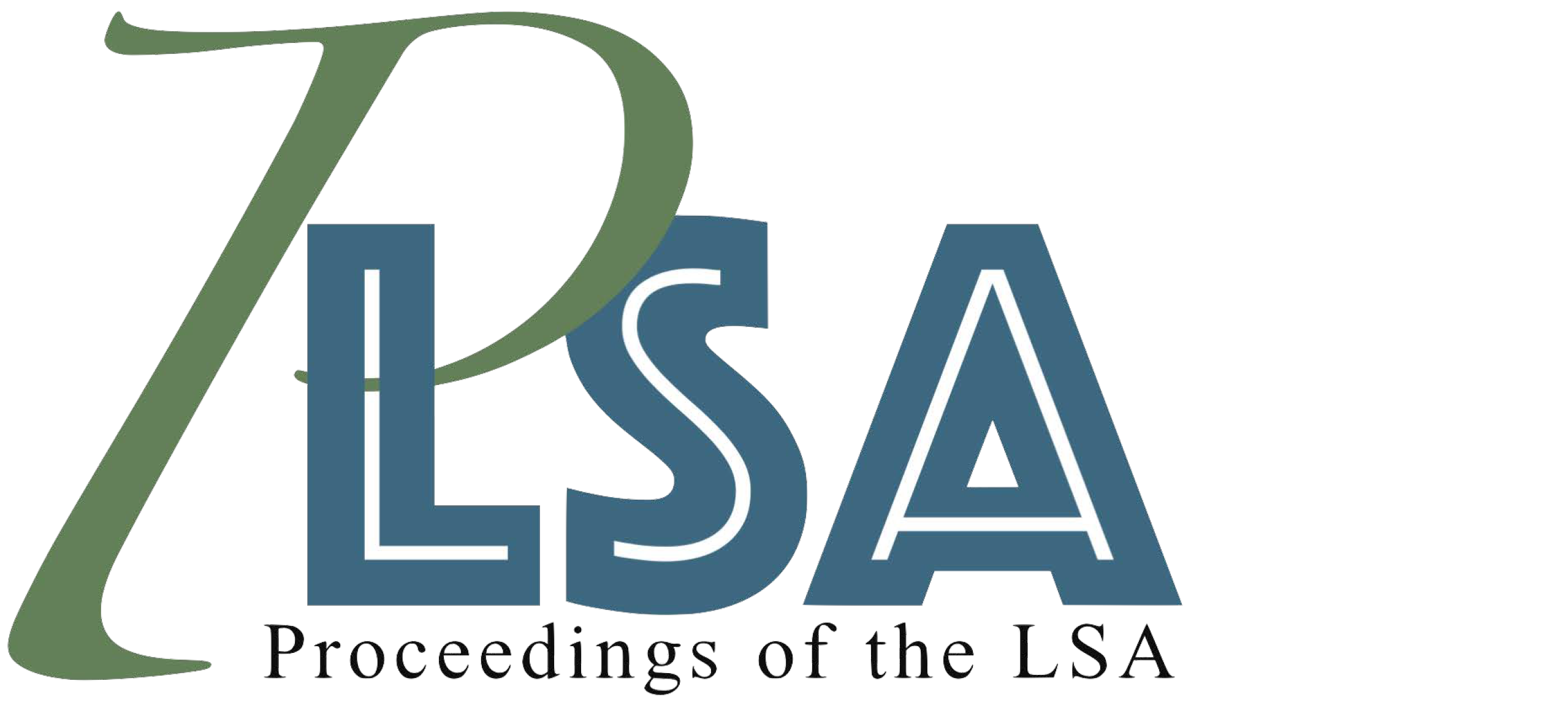Complex tone sandhi types in the Sinitic Wu dialect of Huangyan
DOI:
https://doi.org/10.3765/plsa.v10i1.5935Keywords:
tone sandhi, right-dominance, contour slope, contour clashesAbstract
This study examines tone sandhi for disyllabic words in the Sinitic Wu dialect of Huangyan. Huangyan typically shows right-dominance – word-final tones remain unchanged while word-initial tones change. However, other sandhi types are also observed: left-dominance (only final tones changes), both-change (both initial and final tones change), and no-change cases. I propose to incorporate contour slope [±smooth] and movement [±fall] into the feature geometry of tones to capture the tonal inventory and sandhi processes in this language. For word-initial sandhi, contour slope (sharp vs. smooth) predicts whether the contour is preserved, while contour movement (fall vs. non-fall) predicts whether sandhi is sensitive to adjacent tones. Unlike word-initial sandhi, word-final sandhi is structure-preserving, producing tones already in the inventory, and it changes the register but not the contour of tones. Additionally, idiosyncratic sandhi processes serve as special repairs for contour clashes with successive identical contours.
Downloads
Published
Issue
Section
License
Copyright (c) 2025 Yuanfan Ying

This work is licensed under a Creative Commons Attribution 4.0 International License.
Published by the LSA with permission of the author(s) under a CC BY 4.0 license.
